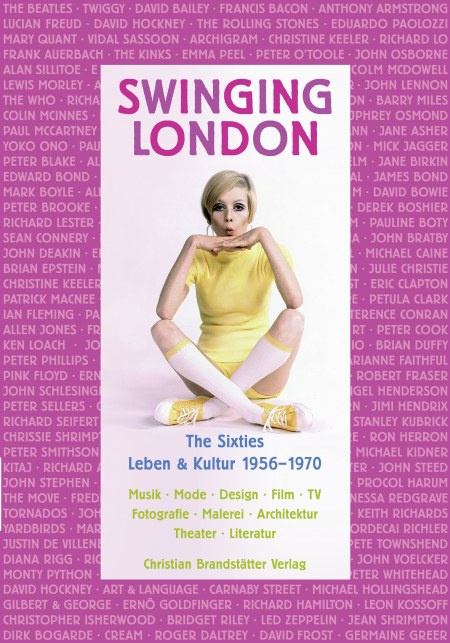Mary Quant’s Miniskirt, Vidal Sassoon’s Bob and the Fab Four
Here they are – the possible names of one’s youth. The names of those one always hears about and whose songs chimed on the radio, who one saw in films and whose pictures cropped up here and there. The record covers in the cupboard of one’s older sister and a listening in at a distance.
BY PETRA ZIMMERMANN
How is it possible for someone to have anything to say about 1960’s London who, at the time, had himself just crawled out of pampers and was about to begin school – someone barely older than the reviewer of the same generation?
He is certainly not a survivor in the sense of a contemporary who had readily engaged in and overcame those notoriously hazardous self-experiments. And yet this is how he successfully keeps this time alive. While, occasionally, those numerous leaps in time in which one moves forward and backward within the space of a few sentences may cause a little bewilderment, they nevertheless also evoke something of the ethos prevalent in 1960s London.
This is the ethos around a group of people who wrote cultural history. It is not an exclusive, closed group, and yet a scene of perhaps no more than 2500 people in a city of roughly eight million inhabitants. All the same, essential impulses emanated from this period before then disseminating throughout the rest of the world. Naturally, this is also a time in which the career of the »fab four« – the Beatles was to reach its zenith, the very epitome of »trendsetters«.
In three periods (1956–1963, 1963–1966, 1966–1970), each of which is divided into several chapters, the book offers almost 370 pages of numerous pictures and interesting information about the icons of my, and perhaps our childhood and early youth. As indicated in the subtitle, all areas of art and culture are represented, and one has the sense that all things are interconnected.
How did everything begin, and why of all places did London become the »swinging« city? What was the elixir of life, and what was it that brought about the end of this exciting era? In his fluently written work, Rainer Metzger addresses just such questions as these. It is supplemented by an index and short biography citing over 170 persons covered – Vidal Sassoon, the trendsetter of »headware« would need to be updated, namely: died in Los Angeles in May, 2012 – the book is appealing in several ways: to browse through, and to read about a period in which, though perhaps already part of the earth’s population, one for the most part experienced consciously only later as after effects. The only downer in this otherwise princely cocktail is the pricy purchase cost of €49,90; but it is a heavy, richly illustrated volume about a vibrant and dynamic era. In any case, it’s good – lay it on!
In May 2012 the author Rainer Metzger presented his new book during a lecture at the ZKM | Karlsruhe. Following the presentation of his book »Swinging London«, author Rainer Metzger will exchange anecdotes with Barry Miles and Peter Weibel on the wild 1960s of the London »Beat Generation«. It was during this decade – among others defined by excessive drug consumption by artists and musicians – that the beginnings of the pop culture which was to later make London art capital of the world became visible. In addition to the discussion as to whether or not Paul McCartney (as member of the Fab Four, the »Beatles«) ought to be allocated to the cultural or counter-cultural movement, Barry Miles gives interesting insights into the first encounter between Yoko Ono and John Lennon in 1966. On the occasion of the »Destruction in Art Symposium« (to which, among others, Peter Weibel had been invited) Yoko Ono, as important representative of the Fluxus-movement, was asked to perform her work »Cut Piece«. On the evening prior to the vernissage, the Japanese-American artist and the Beatles star met for the first time and immediately fell in love with one another.
Book recommendation: Rainer Metzger »Swinging London: The Sixties Life & Culture 1956-1970« Music, Fashion, Design, Film, TV, Photography, Painting, Architecture, Theater, Literature. Selection of illustrations by Christian Brandstätter, Vienna: Brandstätter Verlag, 368 p. : 342 illustrations ISBN 978-3-85033-356-6, 49,90 EUR.
